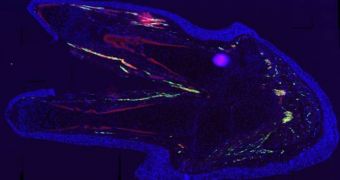A new research has shown that the cells that remain in the limb stumps of salamanders do not, in fact, revert to their most basic state, the embryonic one. Rather, they “downgrade” to a certain point, but that point is far above the embryonic state. Thus, they can recover a lot faster, and contribute to growing the limb back to a greater extent.
Salamanders, together with lizards and other reptiles, are known for their ability so shed a limb when they are in danger. But they are also renowned for growing the same tail or foot back after a period of time. This remarkable trait has been subject of investigation among experts working in the field of human tissue regeneration for many years. Being able to duplicate this property could see amputees growing back their arms or legs, as well as better methods of producing artificial tissue in the lab.
“The cells don’t have to step as far back as we thought they had to, in order to regenerate a complicated thing like a limb. There’s a higher chance that human or mammalian cells can be induced into doing the same thing,” Max Planck Institute Cell Biologist Elly Tanaka explained, quoted by Wired. He is also the co-author of a new study looking into the matter, published in the July 1st issue of the journal Nature.
The main active ingredients in a reptile regenerating one of its limbs are formations known as blastemas, groups of cells that act like a matrix for the future tail or foot. When other types of cells get around these structures, they de-differentiate, meaning they revert to the previous step in the differentiation process that started when the creature was conceived. They basically act like stem cell generators, converting even normal cells into versions of themselves that can turn into bone, blood vessel, cartilage and soft tissue, without effort.
“People working on stem cells are trying to de-differentiate cells in an artificial fashion. It will be very important for the regenerative-medicine community to take stock of what’s going on in the salamander, because they’ve been doing it for 360 million years, and found a natural way to de-differentiate their tissues,” Howard Hughes Medical Institute Stem Cell Biologist Alejandro Sánchez Alvarado added. The expert was not involved with the new study.

 14 DAY TRIAL //
14 DAY TRIAL //